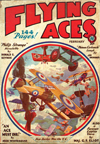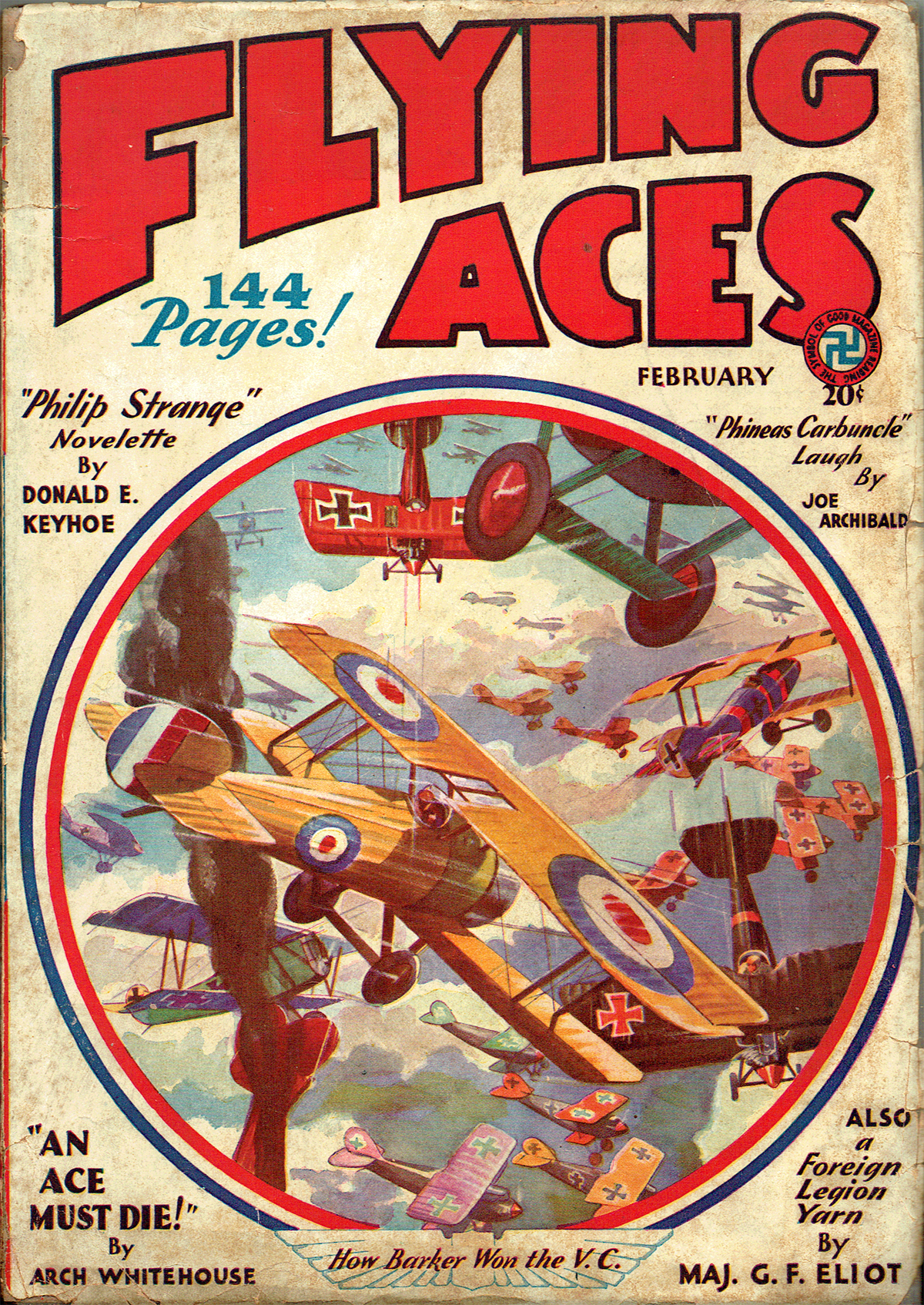“How Barker Won the V.C.†by Paul J. Bissell
THIS week we present another of Paul Bissell’s covers for Flying Aces! Bissell is mainly known for doing the covers of Flying Aces from 1931 through 1934 when C.B. Mayshark took over duties. For the February 1932 cover Bissell put us right in the action as Major Barker fights his way through Hell skies to down five German planes in a single day!
How Barker Won the V.C.
 JUST four years before, it had been Barker. W.G. Private 106074, First Canadian Rifles. Today, October 17, 1918, it was Major Barker, D.S.C., M.C., with forty-six Germans to his credit, who was waving good-bye to his squadron mates as in his Snipe machine he took off for England. The day was clear, and those on the ground smiled as they saw the little machine climb higher and higher. Yes, Billy Barker was obeying orders and “proceeding to England,” but via Germany, and one last scrap.
JUST four years before, it had been Barker. W.G. Private 106074, First Canadian Rifles. Today, October 17, 1918, it was Major Barker, D.S.C., M.C., with forty-six Germans to his credit, who was waving good-bye to his squadron mates as in his Snipe machine he took off for England. The day was clear, and those on the ground smiled as they saw the little machine climb higher and higher. Yes, Billy Barker was obeying orders and “proceeding to England,” but via Germany, and one last scrap.
He was four and a half miles up when he met his first enemy, a double-seater machine, with a good pilot and a scrappy observer. Twice Barker attacked before he sent this plane down. Then, when the machine burst into flames, he pulled out of his dive, leveling off just as a burst from above caught him completely unawares.
He slipped away on a wing, but not soon enough to avoid an explosive bullet which completely shattered his left thigh. Turning to the attack, his fast-maneuvering Snipe quickly got him into a position where, with deadly coolness, he finished his second German of the day.
Dizzy from loss of blood, he suddenly found the sky around him literally black with German pjanes. The watching Tommies on the ground estimated that the planes numbered no less than sixty.
Without hesitation Barker dived at the nearest enemy. Number three went down.
Now the Germans were firing at him from every direction. His machine was hit repeatedly and he himself was wounded again, this time in the right thigh. His machine out of control, he fell into a spin, followed down by the whole German circus. After a few thousand feet, however, the rush of air revived Barker, and savagely he returned to the attack.
A quick tight loop—his favorite maneuver—one short burst, and the fourth German went down in flames. But again Barker pays dearly. This time another explosive bullet takes away his entire left elbow joint. Once again he goes into a spin, down he twists, the Boche diving after and riddling his machine. The gas tank is demolished. Fighting desperately to maintain consciousness, he switches his engine to his auxiliary tank, and once again turns on his foes.
But the battle is over. Faint from loss of blood, scarcely conscious, Barker, with one last effort, turns his plane toward the west, and dives headlong toward the shell-pocked earth, piling up in a barbed wire entanglement just inside the British lines.
Downed at last, but still alive and smiling. Sixty to one were the odds. Five German planes was the toll he took.
The best that England could give in medical attention was his. Slowly they nursed him back to health, and Major Barker became Colonel William George Barker, V.C., D.S.O., M.C., with fifty-one official air victories to his credit—and he was less than twenty-four years old!

“How Barker Won the V.C.â€
Flying Aces, February 1932 by Paul J. Bissell




